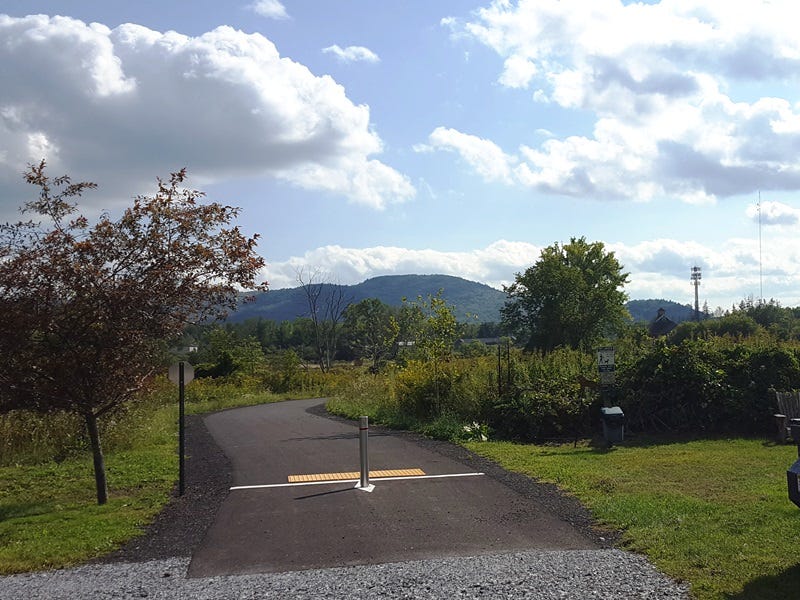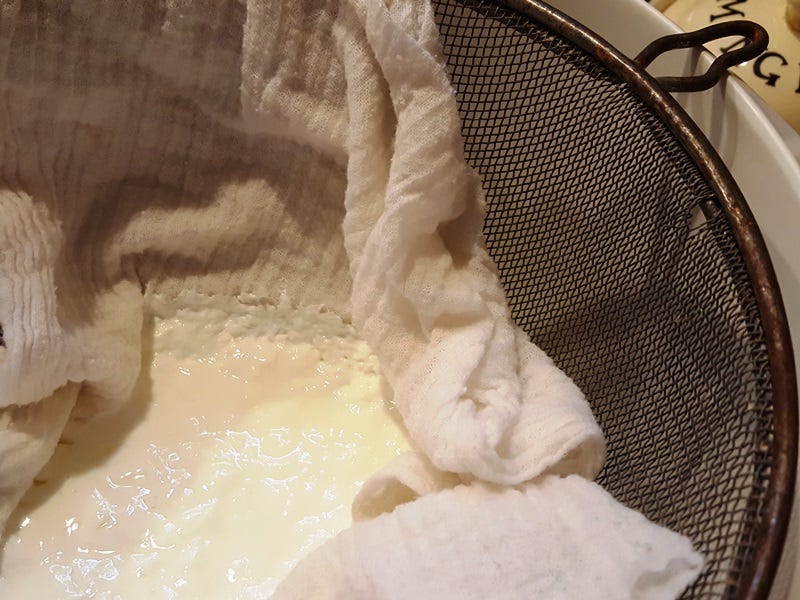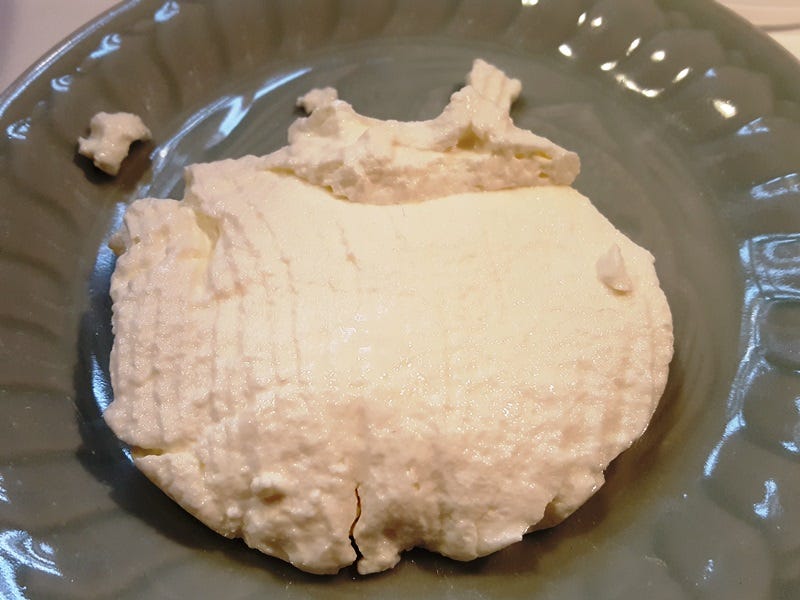Fresh thinking about food waste & why yoghurt has a lower carbon footprint
It's easier than you might think to reduce the carbon impact of your diet
A couple of days ago I read an article that suggested planting a windowbox as a first small step to promote biodiversity . It is a beautiful, expensively digital piece, lots of photos and scrolling headlines, and mostly about the much bigger project of replacing lawn with native-plant meadows and vegetable gardens.
I’m working that transition on a hilly half acre in the middle of a tidy neighborhood, and it isn’t easy. I have “let go of the American ideal of perfection,” as the article puts it. But I also want a beautiful green garden that looks like someone’s paying attention to it. Starting with something much smaller, like a windowbox, sounds like a good idea and something almost anyone can do.
But it’s complicated. In order to plant that windowbox, you could end up buying a bag of potting soil that contains peat and plants that have been grown in a greenhouse heated with fossil fuels.
A lot of “small steps” advice just makes people feel better, without having any impact on climate change or biodiversity. Even something as common as recycling may not really make a difference (more on that in future newsletters). Yesterday, for example, I watched the garbage truck stop outside my house and dump the recycling bin into a trough, followed by the contents of the non-recycling bin. Everything was sucked down a single conveyor belt.
Here at Home Ecology I write about small things and big ones, but the important point I want to get across is that we need to start seeing opportunities for change. We need principles more than specific projects.
One of these is so simple that it’s easy to overlook: we should reduce waste.
Waste has environmental (and economic) costs in production and disposal. It’s clutter, too, and mess. I could give you a list of common wasteful practices, but instead I want to turn this around and explain how I learned that sour milk isn’t something to throw away.
Last week I was browsing in Elizabeth David’s Summer Cooking, and in the chapter “Improvised Cooking for Holidays and Week-ends” I read this list of items to take to a rented house:
A food mill for making purees and mashed potatoes saves hours of time, a sieve for sauces is never to be found except in one’s own kitchen; some muslin squares for draining cream cheese made from the milk which inevitably goes sour. . . .
I laughed. It seemed like ancient history. I don’t peel potatoes before mashing them, let alone putting them through a food mill. I have never sieved a sauce - we have food processors and hand-held blenders now. And making my own cheese? How could that ever have made sense?
I was reminded of an account of the first apartment Sophia and Lewis Mumford lived in, on West 4th Street in New York, in 1921. They had only Sophia’s salary from The Dial magazine, and Lewis had to fetch the day’s milk each morning from the shop at the ground floor of their tenement building. In Lewis Mumford: A Life, Donald Miller explained:
Sophia managed their finances and learned to be incredibly resourceful. She took an extra job in the mornings as an apprentice teacher at the Walden School and worked afternoons at The Dial. She also made most of her clothing, and she came up with some ingenious ways to keep down their food budget. Each morning she soured that bottle of milk, after they had taken the cream off for their coffee, and hung up the curds in the evening to driB so that the following morning they would have cottage cheese instead of butter for their toast.
The hardships seemed to draw Lewis and Sophia closer together, as did Sophia’s slow surrender to his conception of marriage. By 1923 she had given up the idea of experimenting with other men and was thinking of quitting her job at The Dial to have a baby.
This whole passage has always struck me as rather grim. But the day after reading Elizabeth David and rereading the passage about the Mumfords, I discovered, on a tea tray I’d left in my study, a jug of milk that had gone solid. Hm, I thought, I wonder what this “cottage cheese” would be like? I had a bit of muslin1 in the back of a kitchen drawer so I lined the bottom of a colander and dumped in the sour milk.
I knew I would get some kind of soft cheese out of this little experiment. I did not expect it to be something I’d actually want to eat or cook with. It turned out, however, to be very pleasant indeed, tasty and spreadable, certainly worth adding to scrambled eggs or putting on a cracker with a sprinkling of chives. And it could hardly have been easier to make.
I found this interesting because I have been reading about the climate impact of different animal food products. I’d always felt virtuous for eating cheese instead of meat, but most of the dairy products we eat come from cows, so they rank more highly in terms of carbon emissions than eggs, for example. I love cheese and my morning cuppa with milk, but I have been trying to adapt. I’m glad to get a little extra mileage from the milk I buy.2
Now I’m going to pass you over to two experts, Sophie Marbach and Romain Gaillac, who explain that, “Fully replacing items in a diet can be quite daunting, yet starting by simple changes can make a difference. For example, if one trades 1 steak of beef for 1 steak of chicken each week, in a year a quarter ton of carbon emissions will be saved. This is already 20% of reduction in the carbon footprint in a European diet!”
I came across their work in an article, “The carbon footprint of meat and dairy proteins: A practical perspective to guide low carbon footprint dietary choices,” and wrote to them because I wanted to know more about why yoghurt has less carbon impact than milk or cheese.
In brief, and understanding that the data on this is preliminary, Marbach explains that “compared to cheese making, yogurt making is a much less energy demanding process. It also allows one to ‘concentrate’ proteins such that the cost of transporting these proteins is much less than if they were in milk jars. When one transports milk one does transport indeed a lot of water.” Read more (in English or French) and use their app to find your carbon footprint with different diets.
Sophie Marbach also shared this video, which addresses a question that matters to many of us cheese lovers: How hard is cheese on the environment?
There are ideas all around us, some of them very modern and technological, but others are practices from the past that can easily be incorporated into our modern lives. And it’s worth remembering that eating yoghurt has long been associated with longevity!
PS: The photo at the top of this newsletter shows a new bike path in Great Barrington that I learned about yesterday because I cycled to my appointment for an annual physical (first since 2019, naturally) and it turned out that my new doctor is a cyclist. Instead of just getting medical advice, I also got this recommendation to share with you: People for Bikes.
Foodies seem to lose their minds over little things like what to drain cheese in, as you can see in this very long post about alternatives to cheesecloth. Let me sum it up: just use a cotton handkerchief or light-weight cloth napkin, or cut a square from an old cotton shirt. Rinse it when you’re done and hang it to dry. That’s it.
Yes, I’ve tried other forms of milk and they just don’t taste right. And I should note that the soft cheese was made from local High Lawn Farm whole milk. It’s pasteurized and homogenized, like supermarket milk, so I assumed supermarket milk probably be turned into cheese. But I’m experimenting and so far the supermarket milk is sullenly uncooperative.






